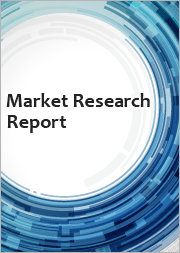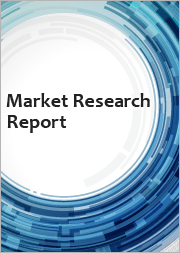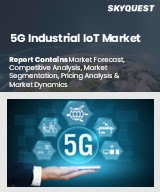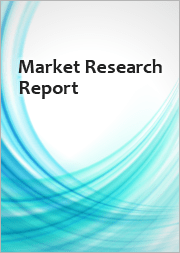
|
시장보고서
상품코드
1847948
사물인터넷(IoT) 시장 : 컴포넌트, 접속 기술, 전개 모델, 용도, 최종 이용 산업별 - 세계 예측(2025-2032년)Internet of Things Market by Component, Connectivity Technology, Deployment Model, Application, End Use Industry - Global Forecast 2025-2032 |
||||||
사물인터넷(IoT) 시장은 2032년까지 연평균 복합 성장률(CAGR) 19.22%로 2조 1,820억 5,000만 달러에 이를 것으로 예측됩니다.
| 주요 시장 통계 | |
|---|---|
| 기준 연도 : 2024년 | 5,345억 7,000만 달러 |
| 추정 연도 : 2025년 | 6,375억 7,000만 달러 |
| 예측 연도 : 2032년 | 2조 1,820억 5,000만 달러 |
| CAGR(%) | 19.22% |
진화하는 사물인터넷 생태계와 기업의 채택 및 구축 아키텍처를 형성하는 전략적 압력에 대한 개요
사물인터넷(IoT)은 연결된 기기의 집합체에서 비즈니스 모델, 제품 로드맵, 그리고 산업 전반의 전략적 의사결정을 형성하는 생태계로 진화하고 있습니다. 최근 몇 년 동안 도입은 개념 증명 파일럿에서 지연 시간, 보안, 수명 주기 관리가 성공을 좌우하는 미션 크리티컬한 구현으로 변화하고 있습니다. 기술이 성숙해짐에 따라 기업 리더들은 아키텍처, 공급업체와의 관계, 데이터 거버넌스를 둘러싼 복잡한 선택에 고민하고 있으며, 규제 당국과 소비자들은 점점 더 투명성과 탄력성을 요구하고 있습니다. 따라서 기업은 디바이스 중심의 관점을 넘어 엣지 인텔리전스, 클라우드 오케스트레이션, 강력한 연결성의 균형을 맞추는 시스템적 사고를 도입해야 합니다.
이러한 배경에서 몇 가지 촉매제가 될 만한 흐름이 수렴되고 있습니다. 엣지 컴퓨팅과 AI는 인텔리전스를 분산시키고, 더 빠른 의사결정을 가능하게 하며, 백홀 네트워크에 대한 의존도를 낮추고 있습니다. 다양한 연결 기술은 처리량, 통신 거리, 전력 소비에 있어 차별화된 트레이드오프를 제공하여 하이브리드 연결 전략을 촉진하고 있습니다. 보안, 프라이버시, 지속가능성은 이제 조달과 배치의 핵심 기준이지 후발적 기준이 아닙니다. 센서 데이터와 디바이스 텔레메트리에서 측정 가능한 비즈니스 성과를 도출하고자 하는 기업들은 소프트웨어, 애널리틱스, 매니지드 서비스의 역할을 강화하는 데 힘을 합치고 있습니다. 이 입문 개요는 경영진이 IoT 이니셔티브를 확장할 때 해결해야 할 전략적 긴장과 기회를 명확히 함으로써 나머지 분석을 구성합니다.
연결성, 엣지 인텔리전스, 소프트웨어 중심 모델, 공급망 강건성이 IoT 도입의 전략적 우선순위를 재정의하는 방법
IoT 환경은 기술적 성숙, 경제적 인센티브의 변화, 규제 환경의 우선순위 변화에 따라 혁신적인 변화를 경험하고 있습니다. 네트워크의 진화는 변화의 주요 벡터 중 하나입니다. 5G의 확산과 LPWAN 기술의 꾸준한 확장은 대규모 디바이스 밀도 또는 초저지연 연결이 필요한 새로운 유형의 이용 사례를 가능하게 하고 있습니다. 그 결과, 솔루션 설계자는 비용, 커버리지, 성능의 균형을 맞추기 위해 셀룰러, LPWAN, 프라이빗 네트워크 옵션을 결합하여 비용, 커버리지, 성능의 균형을 맞추고 있습니다. 연결성 향상과 함께 엣지 컴퓨팅과 분산형 인텔리전스가 용도 설계의 방향을 바꾸고 있습니다. 중앙 집중식 클라우드에서 처리되던 워크로드가 소스 근처에서 실행되어 대기 시간 단축, 대역폭 확보, 산업 및 안전이 중요한 상황에서의 실시간 제어가 가능해집니다.
또 다른 중요한 변화는 하드웨어 대비 소프트웨어 및 서비스의 가치가 높아지고 있다는 점입니다. 업계는 하드웨어 중심의 배포에서 라이프사이클 관리, 분석, 플랫폼 상호운용성이 장기적인 가치를 결정하는 소프트웨어 정의 기능으로 전환하고 있습니다. 이러한 전환은 벤더 종속성, 개방형 표준, 모듈형 아키텍처에 대한 문제를 제기하고 있습니다. 보안 역시 체크박스 컴플라이언스에서 지속적인 리스크 관리로 전환되고 있습니다. 위협 모델은 현재 디바이스 온보딩, 펌웨어 업데이트, 공급망 무결성, 데이터 주권을 포괄해야 합니다. 경제적으로는 공급망 재편과 부품의 다양화로 인해 기업들은 조달 전략과 복원력 계획을 재검토해야 합니다. 동시에 지속가능성 목표와 규제 모니터링이 설계 선택에 영향을 미치고, 에너지 효율적인 센서, 재활용 가능한 재료, 수명주기 공개를 통합하는 것이 차별화 요소로 작용하고 있습니다. 이러한 변화는 IoT 생태계 전반의 조달 우선순위, 파트너십 모델, 로드맵을 재구성하고 있습니다.
관세율과 무역 정책의 변화로 인해 IoT 가치사슬 전반에서 공급업체 다변화, 니어쇼어링, 제품 재설계, 새로운 상업적 모델이 어떻게 촉진되고 있는가?
관세의 부과와 진화는 세계 IoT 가치사슬을 운영하는 이해관계자들에게 전략적 복잡성을 야기하고 있습니다. 무역장벽과 관세 증가는 부품 및 완제품의 조달 결정에 영향을 미치고, 구매자와 제조업체가 조달 지역, 공급업체와의 관계, 재고 전략을 재검토하도록 유도하고 있습니다. 그 결과, 많은 기업들이 공급업체 다변화와 니어쇼어링을 추진하여 관세 노출과 물류의 불확실성을 줄이고 있습니다. 이러한 조달 변화는 부품 스왑, 리드타임 연장 조항, 비용 분담 메커니즘 등 유연성을 강조하는 계약 재협상을 수반하고 있습니다.
이와 병행하여 관세는 특정 대량 생산에서 정치적으로 민감한 제품 부문의 현지화 전략을 가속화하고 있습니다. 기업들은 총 토지 비용, 품질 관리, 지적재산권 보호 측면에서 현지 조립과 중앙집중식 제조의 절충점을 평가했습니다. 기술자들은 파괴적인 재설계 없이 대체 조달이 가능하도록 부품의 표준화, 모듈화, 부품표 최적화를 우선시하고 있습니다. 상업적 관점에서 볼 때, 채널과 서비스 제공업체들은 다년 계약을 통해 비용에 대한 영향을 분산시키고, 하드웨어 판매보다 성과에 중점을 둔 번들 서비스를 제공함으로써 시장 진입 접근 방식을 조정하고 있습니다. 중요한 것은 관세 시나리오 계획, 정기적인 무역 정책 모니터링, 세관 고문과의 적극적인 관계, 규정 준수를 보장하고 면제 가능성을 파악하는 등 리스크 관리 관행이 확대되어야 한다는 것입니다. 이러한 현실적인 조정을 통해 기업들은 보호무역주의적인 무역 환경을 극복하고 사업 확장의 모멘텀을 유지할 수 있습니다.
구성 요소, 연결성, 배포 모델, 용도 유형 및 수직 산업 특성을 연결하는 상세한 세분화 인사이트를 통해 전략적 IoT 의사결정을 내릴 수 있습니다.
IoT 시장을 이해하려면 구성 요소, 연결성 옵션, 배포 모델, 용도, 산업별로 수요와 용량이 어떻게 매핑되는지 자세히 파악해야 합니다. 컴포넌트 레벨에서 이해관계자들은 게이트웨이, 모듈 및 프로세서, 센서 등 하드웨어 카테고리와 매니지드 서비스와 프로페셔널 서비스를 구성하는 서비스, 그리고 분석 소프트웨어, 애플리케이션 소프트웨어, 플랫폼 기능 등 소프트웨어 계층을 고려해야 합니다. 플랫폼 기능 등의 소프트웨어 레이어를 고려해야 합니다. 이러한 구성 요소의 차이는 조달 주기, 지원 모델, 업그레이드 일정에 영향을 미칩니다. 연결성 옵션은 셀룰러 기술과 LPWAN 접근법의 공존이라는 또 다른 차별화 축을 보여주며, 각각의 통신 거리, 처리량, 지연, 전력 소비에 대한 명확한 트레이드오프를 제공하여 특정 이용 사례에 맞는 솔루션을 설계하는 데 도움이 됩니다.
클라우드 호스팅 또는 On-Premise와 같은 배포 모델 결정은 운영 관리, 데이터 레지던시, 통합의 복잡성을 형성하고, 기술적 선호도뿐만 아니라 규제적 제약을 반영하는 경우가 많습니다. 커넥티드카, 산업용 IoT, 정밀 농업, 스마트 시티, 스마트 헬스케어, 스마트 홈 등 각 시나리오별 솔루션은 디바이스 견고성, 지연 내성, 데이터 양, 라이프사이클 관리 등에 대한 고유한 요구사항이 있습니다. 마지막으로 농업, 에너지 및 유틸리티, 헬스케어, 제조업, 미디어-엔터테인먼트, 소매업, 운송-물류 등 최종 사용 산업은 조달 주기, 보안 체계, 가치 지표가 각각 다릅니다. 이러한 세분화를 통합함으로써 의사결정자는 투자 경로의 우선순위를 정하고, 상호 운용 가능한 아키텍처를 설계하고, 상업적 모델을 대상 산업의 운영 현실에 맞게 조정할 수 있습니다.
IoT 솔루션의 채택, 조달 및 배포 전략을 형성하는 북미, 중남미, 중동 및 아프리카, 아시아태평양의 역학적 역학 및 규제 상황
지역 역학은 IoT 생태계의 발전 방식과 투자 모멘텀이 어디에 집중되는지에 중대한 영향을 미칩니다. 미주 지역에서는 클라우드 네이티브 애널리틱스의 빠른 기업 도입, 커넥티드 차량 및 산업용 IoT 솔루션에 대한 높은 수요, 대규모 구축을 지원하는 활기찬 기술 및 서비스 시장이 시장 활동을 주도하고 있습니다. 특히 국경을 넘는 데이터 흐름과 소비자용도이 우려되는 경우, 프라이버시 및 데이터 보호에 대한 규제에 대한 논의가 지속적으로 전개되고 있습니다. 유럽, 중동 및 아프리카는 규제 환경의 차이, 공공 부문의 스마트시티 구상, 지속가능성과 에너지 효율이 뛰어난 솔루션에 대한 두드러진 관심으로 인해 서로 다른 상황을 보이고 있습니다. 여기서, 표준화 노력과 표준화 활동은 상호 운용 가능한 플랫폼과 친환경 인증 하드웨어의 조달을 가속화하고 있습니다.
아시아태평양은 일부 시장에서 소비자 대상 IoT의 대량 도입부터 제조업이 많은 경제권에서 급속한 산업 디지털화까지 다양한 활동을 보이고 있습니다. 이 지역은 제조 능력과 공급망 통합이 주목할 만한 점이며, 이는 종종 세계 조달 전략과 부품의 가용성에 영향을 미칩니다. 지역 간 협력과 기술 이전은 점점 더 보편화되고 있으며, 여러 지역에 걸쳐 사업을 전개하는 기업들은 여러 관할권을 준수하고 다양한 연결 생태계에 대응할 수 있도록 설계해야 합니다. 이를 종합하면, 시장 진입 우선순위와 파트너 선택부터 현지화 요구사항과 장기적인 지원 모델에 이르기까지 지역별로 고려해야 할 사항들이 모두 영향을 미칩니다.
칩 제조업체와 디바이스 벤더에서 클라우드 플랫폼과 시스템 통합사업자에 이르기까지, 다층적인 경쟁 생태계가 IoT의 혁신과 전략적 파트너십 모델을 촉진하는 방법
IoT의 경쟁 환경과 파트너 환경은 전문 벤더가 대규모 플랫폼 및 서비스 통합업체와 공존하는 생태계로 성숙하여 기능과 시장 출시 옵션의 중층적 시장을 형성하고 있습니다. 반도체 및 모듈 공급업체는 전력 효율, 무선 통합, 엣지에서의 AI 가속화와 같은 근본적인 혁신을 계속 추진하고 있으며, 게이트웨이 및 센서 제조업체는 견고성, 인증, 도메인별 최적화에 초점을 맞추었습니다. 하이퍼스케일 클라우드 제공업체와 플랫폼 벤더들은 데이터 관리, AI 툴, 개발자 경험으로 경쟁하며 가치 실현 시간을 단축하는 통합 스택을 제공하지만, 이식성과 락인(lock-in)에 대한 전략적 의문을 제기하고 있습니다.
시스템 통합사업자와 매니지드 서비스 제공업체는 복잡성을 완화하기 위해 업계 전문 지식과 구축 및 매니지드 서비스를 결합하여 플랫폼의 역량을 운영 성과로 전환하는 데 있어 매우 중요한 역할을 수행합니다. 또한, 통신사 및 사설 네트워크 제공업체들은 SIM 및 eSIM 관리를 네트워크 슬라이싱 및 사설 LTE/5G 솔루션과 번들로 묶어 서비스형 커넥티비티(Connectivity-as-a-Service)의 입지를 더욱 강화하고 있습니다. 스타트업과 수직적 전문 기업들은 정밀농업, 예지보전, 공급망 가시화 등의 분야에서 틈새 문제에 초점을 맞추어 용도 계층에서 혁신에 기여하고 있습니다. 성능, 보안, 총소유비용(TCO)의 균형 잡힌 베스트 오브 브리드 솔루션을 구축하고자 하는 기업들은 전략적 파트너십과 공동 개발 계약을 체결하는 것이 일반화되어 있습니다.
IoT 이니셔티브를 성공적으로 확장하기 위한 아키텍처 선택, 연결성 다양성, 설계별 보안, 상업적 무결성, 공급업체 복원력에 대한 실용적인 플레이북
업계 리더는 IoT 이니셔티브를 성공적으로 확장하기 위해 기술적 엄격함과 실용적인 상업적 조치의 균형을 맞추는 행동 지향적 플레이북을 채택해야 합니다. 첫째, 핵심 플랫폼 서비스와 도메인별 용도를 분리하고, 모듈식 업그레이드와 멀티 벤더 상호운용성을 가능하게 하는 아키텍처 결정을 우선시합니다. 이러한 접근 방식을 통해 벤더 종속 위험을 줄이고, 기존 인프라를 완전히 교체하지 않고도 새로운 분석 및 AI 기능을 시험적으로 도입할 수 있습니다. 셀룰러 및 LPWAN 옵션과 필요에 따라 사설 네트워크를 혼합하여 용도 요구 사항에 맞는 탄력적인 커버리지와 비용 프로파일을 제공합니다. 보안 온보딩, 인증된 펌웨어 업데이트, 하드웨어 루트 오브 트러스트, 비정상적인 동작을 감지하기 위한 지속적인 모니터링 등이 있습니다.
넷째, 상업적 모델을 성과 기반 지표와 일치시켜 하드웨어 조달에서 가동 시간, 인사이트 처리량, 효율성 향상과 같은 서비스 수준의 성과로 대화를 전환합니다. 다섯째, 부품 공급처를 다양화하고, 부품 대체 및 리드타임 변동에 대응할 수 있는 유연한 계약을 협상하여 공급업체의 탄력성에 투자합니다. 여섯째, 규제의 뉘앙스, 현지화 요구, 파트너 생태계를 고려한 지역별 시장 전략을 수립하고 도입을 가속화합니다. 마지막으로, 의사결정을 간소화하고, 컴플라이언스를 보장하며, ROI를 측정할 수 있는 이용 사례에 우선순위를 두기 위해 IT, OT, 법무, 조달, 사업 부문을 아우르는 부서 간 거버넌스를 구축합니다. 이러한 실용적인 단계를 통해 리스크를 관리하고 전략적 선택권을 유지하면서 규모 확장을 위한 재현 가능한 경로를 구축할 수 있습니다.
인터뷰, 기술 검증, 2차 분석을 결합한 투명한 삼각측량 조사 방법을 통해 실용적이고 의사결정이 가능한 IoT 인사이트를 확보합니다.
본 분석을 뒷받침하는 조사 방법은 1차 조사와 2차 조사, 전문가 질적 인터뷰, 상호 검증을 통합하여 견고성과 타당성을 확보하였습니다. 1차 입력에는 기업의 기술 리더, 제품 소유자, 시스템 통합사업자, 네트워크 운영자와의 구조화된 인터뷰를 통해 도입 과제, 선택 기준, 운영 모델에 대한 생생한 관점을 파악할 수 있습니다. 이러한 인사이트는 엔지니어 및 아키텍트와의 기술 검증 세션을 통해 성능, 상호운용성, 엣지-클라우드 통합 패턴에 대한 가정을 검증하는 기술 검증 세션으로 보완됩니다. 2차 조사에서는 공개된 기술 문서, 규제 당국 신고, 업계 표준, 벤더의 백서, 업계 잡지 등을 광범위하게 조사하여 기술력과 도입 동향을 매핑했습니다.
분석에서는 가설을 검증하고 세분화 프레임워크를 개선하기 위해 반복적인 워크샵을 진행하면서 다양한 인풋을 조정하기 위해 삼각측량 기법을 사용했습니다. 데이터 품질 관리에는 주요 의사 결정에 대한 근접성을 기반으로 한 정보 출처의 가중치 부여, 최근 동향을 강조하기 위한 시계열 필터링, 실용적인 관련성을 보장하기 위한 도입 사례와의 상호 참조 등이 포함되었습니다. 마지막으로, 이 조사 방법은 전제조건의 투명성과 원자료에 대한 추적성을 강조하여 이해관계자들이 자신 있게 결론을 검토하고 그 통찰력을 특정 맥락에 적용할 수 있도록 했습니다.
IoT 이니셔티브에서 지속 가능한 가치를 실현하기 위해 필요한 기술적, 조직적, 상업적 요소를 강조하는 전략적 요구사항의 통합
IoT 기술과 생태계의 성숙은 산업을 불문하고 조직의 전략적 계산을 변화시키고 있습니다. 이제 성공의 열쇠는 디바이스의 보급보다 연결성, 엣지 인텔리전스, 소프트웨어 기반 서비스를 탄력적인 비즈니스 프로세스에 통합할 수 있느냐에 달려있습니다. 리더들은 엣지 AI, 다양한 연결성 스택, 성과 기반 상업적 모델이 제공하는 기회를 포착하는 동시에 공급업체 선정, 지역 규정 준수, 공급망 복원력과 관련된 새로운 트레이드오프에 직면해야 합니다. 모듈형 아키텍처를 채택하고, 보안과 거버넌스를 우선시하며, 측정 가능한 비즈니스 성과와 조달을 일치시키는 기업은 IoT 이니셔티브를 확장하고 장기적인 가치를 창출하는 데 유리한 위치를 점할 수 있습니다.
앞으로는 개방형 표준과 플랫폼 통합의 상호작용에 따라 상호운용성과 혁신의 정도가 결정될 것입니다. 공급업체 다변화, 멀티 커넥티비티를 위한 설계, 매니지드 서비스 기능에 대한 투자 등 실용적인 조치를 취함으로써 기업은 불확실성을 피하고 가치 실현 시간을 단축할 수 있습니다. 궁극적으로 IoT의 기술적 가능성은 센서 데이터를 전략적 우위로 전환하기 위한 조직적 준비, 즉 거버넌스, 기술, 부서 간 협업 등 조직적 준비와 일치해야 합니다.
목차
제1장 서문
제2장 조사 방법
제3장 주요 요약
제4장 시장 개요
제5장 시장 인사이트
제6장 미국 관세의 누적 영향 2025
제7장 AI의 누적 영향 2025
제8장 사물인터넷(IoT) 시장 : 컴포넌트별
- 하드웨어
- 게이트웨이
- 모듈 및 프로세서
- 센서
- 서비스
- 매니지드 서비스
- 전문 서비스
- 소프트웨어
- 분석 소프트웨어
- 애플리케이션 소프트웨어
- 플랫폼
제9장 사물인터넷(IoT) 시장 : 커넥티비티 기술별
- 셀룰러
- LPWAN
제10장 사물인터넷(IoT) 시장 : 전개 모델별
- 클라우드
- On-Premise
제11장 사물인터넷(IoT) 시장 : 용도별
- 커넥티드카
- 산업 IoT
- 정밀농업
- 스마트 시티
- 스마트 헬스케어
- 스마트홈
제12장 사물인터넷(IoT) 시장 : 최종 이용 산업별
- 농업
- 에너지 및 유틸리티
- 헬스케어
- 제조업
- 미디어 및 엔터테인먼트
- 소매
- 운송 및 물류
제13장 사물인터넷(IoT) 시장 : 지역별
- 아메리카
- 북미
- 라틴아메리카
- 유럽, 중동 및 아프리카
- 유럽
- 중동
- 아프리카
- 아시아태평양
제14장 사물인터넷(IoT) 시장 : 그룹별
- ASEAN
- GCC
- EU
- BRICS
- G7
- NATO
제15장 사물인터넷(IoT) 시장 : 국가별
- 미국
- 캐나다
- 멕시코
- 브라질
- 영국
- 독일
- 프랑스
- 러시아
- 이탈리아
- 스페인
- 중국
- 인도
- 일본
- 호주
- 한국
제16장 경쟁 구도
- 시장 점유율 분석, 2024
- FPNV 포지셔닝 매트릭스, 2024
- 경쟁 분석
- Amazon Web Services, Inc.
- Microsoft Corporation
- Google LLC
- IBM Corporation
- Cisco Systems, Inc.
- Intel Corporation
- Huawei Technologies Co., Ltd.
- SAP SE
- Oracle Corporation
- PTC Inc.
The Internet of Things Market is projected to grow by USD 2,182.05 billion at a CAGR of 19.22% by 2032.
| KEY MARKET STATISTICS | |
|---|---|
| Base Year [2024] | USD 534.57 billion |
| Estimated Year [2025] | USD 637.57 billion |
| Forecast Year [2032] | USD 2,182.05 billion |
| CAGR (%) | 19.22% |
Executive overview of the evolving Internet of Things ecosystem and the strategic pressures shaping enterprise adoption and deployment architectures
The Internet of Things (IoT) continues to evolve from a collection of connected devices into an ecosystem that shapes operational models, product roadmaps, and strategic decision-making across industries. In recent years, deployments have shifted from proof-of-concept pilots to mission-critical implementations where latency, security, and lifecycle management determine success. As technologies mature, enterprise leaders contend with a more complex set of choices around architecture, vendor relationships, and data governance, while regulators and consumers increasingly expect transparency and resilience. Consequently, organizations must move beyond a device-centric view and embrace systems thinking that balances edge intelligence, cloud orchestration, and robust connectivity.
Against this backdrop, several catalytic trends are converging to reshape the landscape. Edge compute and AI are decentralizing intelligence, enabling faster decision loops and reducing reliance on backhaul networks. Diverse connectivity technologies provide differentiated trade-offs in throughput, range, and power consumption, prompting hybrid connectivity strategies. Security, privacy, and sustainability are now core criteria for procurement and deployment, rather than afterthoughts. Together, these forces are elevating the role of software, analytics, and managed services, as enterprises seek to derive measurable business outcomes from sensor data and device telemetry. This introductory overview frames the remainder of the analysis by clarifying the strategic tensions and opportunities that executives must address when scaling IoT initiatives.
How connectivity, edge intelligence, software-centric models, and supply chain resilience are collectively redefining strategic priorities for IoT deployments
The IoT landscape is experiencing transformative shifts driven by technological maturation, changing economic incentives, and evolving regulatory priorities. Network evolution is one major vector of change: the rollout of 5G and the steady expansion of LPWAN technologies are enabling new classes of use cases that require either massive device density or ultra-low-latency connectivity. As a result, solution architects are blending cellular, LPWAN, and private network options to balance cost, coverage, and performance. Parallel to connectivity advances, edge computing and distributed intelligence are reorienting application design. Workloads that once traveled to centralized clouds for processing are increasingly executed close to the source, reducing latency and preserving bandwidth while enabling real-time control in industrial and safety-critical contexts.
Another pivotal shift is the ascending value of software and services relative to hardware. The industry has moved from hardware-first deployments to software-defined capabilities where lifecycle management, analytics, and platform interoperability determine long-term value. This transition elevates questions around vendor lock-in, open standards, and modular architectures. Security has also moved from checkbox compliance to continuous risk management; threat models now must encompass device onboarding, firmware updates, supply chain integrity, and data sovereignty. Economically, supply chain reconfiguration and component diversification are prompting organizations to rethink sourcing strategies and resilience planning. In tandem, sustainability goals and regulatory scrutiny are influencing design choices, with energy-efficient sensors, recyclable materials, and embedded lifecycle disclosures becoming differentiators. Collectively, these shifts are reshaping procurement priorities, partnership models, and roadmaps across the IoT ecosystem.
How tariff dynamics and trade-policy shifts are prompting supplier diversification, nearshoring, product redesign, and new commercial models across IoT value chains
The imposition and evolution of tariffs have introduced a layer of strategic complexity for stakeholders operating global IoT value chains. Increased trade barriers and tariffs affect procurement decisions across components and finished devices, prompting buyers and manufacturers to reassess sourcing geographies, supplier relationships, and inventory strategies. Consequently, many firms are pursuing supplier diversification and nearshoring to mitigate tariff exposure and logistics uncertainty. These sourcing shifts are accompanied by contractual renegotiations that emphasize flexibility around component swaps, longer lead-time clauses, and cost-sharing mechanisms.
In parallel, tariffs are accelerating localization strategies for certain high-volume and politically sensitive product segments. Organizations are evaluating the trade-offs between localized assembly and centralized manufacturing in terms of total landed cost, quality control, and intellectual property protections. Tariff-driven cost pressures are also influencing design choices: engineers are prioritizing component standardization, modularity, and bill-of-material optimization to enable alternative sourcing without disruptive redesign. From a commercial perspective, channels and service providers are adapting their go-to-market approaches, offering bundled services that spread cost impacts over multi-year contracts and emphasize outcomes rather than hardware sales. Importantly, risk management practices are expanding to include tariff scenario planning, regular trade-policy monitoring, and active engagement with customs advisors to ensure compliance and identify potential exemptions. These pragmatic adjustments help firms preserve deployment momentum while navigating a more protectionist trade environment.
Detailed segmentation insight that connects components, connectivity, deployment models, application types, and vertical industry characteristics to inform strategic IoT decisions
Understanding the IoT market requires a granular view of how demand and capability map across components, connectivity options, deployment models, applications, and industry verticals. At the component level, stakeholders must consider hardware categories that include gateways, modules and processors, and sensors alongside services that comprise managed services and professional services, as well as software layers such as analytics software, application software, and platform capabilities. These component distinctions influence procurement cycles, support models, and upgrade cadences. Connectivity choices present another axis of differentiation, where cellular technologies coexist with LPWAN approaches, each offering distinct trade-offs in range, throughput, latency, and power consumption that inform solution design for particular use cases.
Deployment model decisions-whether cloud-hosted or on premises-shape operational control, data residency, and integration complexity, and they often reflect regulatory constraints as much as technical preference. Application segmentation is equally critical: solutions for connected vehicles, industrial IoT, precision agriculture, smart city deployments, smart healthcare, and smart home scenarios each impose unique requirements on device ruggedness, latency tolerance, data volumes, and lifecycle management. Finally, end use industries such as agriculture, energy and utilities, healthcare, manufacturing, media and entertainment, retail, and transportation and logistics have distinct procurement cycles, security postures, and value metrics. By synthesizing these segmentation dimensions, decision-makers can prioritize investment paths, design interoperable architectures, and align commercial models with the operational realities of their target verticals.
Regional dynamics and regulatory landscapes across the Americas, Europe-Middle East-Africa, and Asia-Pacific that shape adoption, sourcing, and deployment strategies for IoT solutions
Regional dynamics exert a material influence on how IoT ecosystems develop and where investment momentum concentrates. In the Americas, market activity is shaped by rapid enterprise uptake of cloud-native analytics, strong demand for connected vehicle and industrial IoT solutions, and a vibrant technology services market that supports large-scale rollouts. Regulatory conversations around privacy and data protection continue to frame deployment patterns, particularly where cross-border data flows and consumer-facing applications are concerned. Europe, the Middle East and Africa exhibit a heterogeneous landscape driven by differing regulatory regimes, public sector smart city initiatives, and a pronounced focus on sustainability and energy-efficient solutions. Here, harmonization efforts and standards-setting activities are accelerating procurement of interoperable platforms and green-certified hardware.
Asia-Pacific displays a broad spectrum of activity, from high-volume consumer IoT adoption in some markets to rapid industrial digitization in manufacturing-heavy economies. The region is notable for its manufacturing capabilities and supply chain integration, which often influence global sourcing strategies and component availability. Cross-region collaboration and technology transfers are increasingly common, and businesses operating across these geographies must design for multi-jurisdictional compliance and diverse connectivity ecosystems. Taken together, regional considerations inform everything from go-to-market priorities and partner selection to localization requirements and long-term support models.
How a multi-layered competitive ecosystem-from chipmakers and device vendors to cloud platforms and systems integrators-drives innovation and strategic partnership models in IoT
The competitive and partner landscape for IoT has matured into an ecosystem where specialized vendors coexist with large platforms and service integrators, creating a layered market of capabilities and go-to-market options. Semiconductor and module vendors continue to drive foundational innovation in power efficiency, radio integration, and AI acceleration at the edge, while gateway and sensor manufacturers focus on ruggedization, certification, and domain-specific optimizations. Hyperscale cloud providers and platform vendors are competing on data management, AI tooling, and developer experience, offering integrated stacks that reduce time to value but raise strategic questions about portability and lock-in.
Systems integrators and managed service providers play a pivotal role in translating platform capabilities into operational outcomes, combining industry expertise with deployment and managed services to mitigate complexity. Additionally, telecommunications operators and private network providers are increasingly positioning connectivity-as-a-service offerings, bundling SIM and eSIM management with network slicing and private LTE/5G solutions. Startups and vertical specialists contribute innovation at the application layer, focusing on niche problems in areas such as precision agriculture, predictive maintenance, and supply chain visibility. Across this spectrum, strategic partnerships and co-development agreements have become common, as enterprises seek to assemble best-of-breed solutions that balance performance, security, and total cost of ownership.
A pragmatic playbook of architecture choices, connectivity diversity, security by design, commercial alignment, and supplier resilience to scale IoT initiatives successfully
Industry leaders must adopt an action-oriented playbook that balances technical rigor with pragmatic commercial steps to scale IoT initiatives successfully. First, prioritize architecture decisions that separate core platform services from domain-specific applications, enabling modular upgrades and multi-vendor interoperability. This approach reduces vendor lock-in risk and allows teams to pilot new analytics and AI capabilities without wholesale replacement of existing foundations. Second, incorporate connectivity diversity into deployment blueprints; blending cellular and LPWAN options, and where appropriate private networks, produces resilient coverage and cost profiles that match application requirements. Third, embed security and privacy by design across the device lifecycle, covering secure onboarding, authenticated firmware updates, hardware root-of-trust, and continuous monitoring to detect anomalous behavior.
Fourth, align commercial models with outcome-based metrics, shifting conversations from hardware procurement to service-level outcomes such as uptime, throughput of insights, or efficiency improvements. Fifth, invest in supplier resilience by diversifying component sources and negotiating flexible contracts that support part substitutions and variable lead times. Sixth, develop regional go-to-market strategies that account for regulatory nuances, localization needs, and partner ecosystems to accelerate adoption. Finally, establish cross-functional governance that brings together IT, OT, legal, procurement, and business units to streamline decision-making, ensure compliance, and prioritize use cases with measurable ROI. These pragmatic steps create a repeatable path to scale while managing risk and preserving strategic optionality.
Transparent, triangulated research methodology combining interviews, technical validation, and secondary analysis to ensure practical, decision-ready IoT insights
The research approach underpinning this analysis integrates primary and secondary research, qualitative expert interviews, and cross-validation to ensure robustness and relevance. Primary inputs include structured interviews with enterprise technology leaders, product owners, systems integrators, and network operators to capture first-hand perspectives on deployment challenges, selection criteria, and operating models. These insights are complemented by technical validation sessions with engineers and architects to verify assumptions on performance, interoperability, and edge-cloud integration patterns. Secondary research encompasses an expansive review of publicly available technical documentation, regulatory filings, industry standards, vendor white papers, and trade publications to map technology capabilities and adoption trends.
Analysis employed a triangulation methodology to reconcile divergent inputs, with iterative workshops to test hypotheses and refine segmentation frameworks. Data quality controls included source weighting based on proximity to primary decision-making, chronological filtering to emphasize recent developments, and cross-reference against implementation case studies to ensure practical relevance. Finally, the methodology emphasized transparency in assumptions and traceability of findings to original source materials, enabling stakeholders to interrogate conclusions and apply the insights to their specific contexts with confidence.
Synthesis of strategic imperatives highlighting the technical, organizational, and commercial factors necessary to realize sustained value from IoT initiatives
The maturation of IoT technologies and ecosystems is shifting the strategic calculus for organizations across industries. Success now depends less on device proliferation and more on the ability to integrate connectivity, edge intelligence, and software-driven services into resilient operational processes. Leaders must confront new trade-offs around vendor selection, regional compliance, and supply chain resilience while seizing opportunities enabled by AI at the edge, diverse connectivity stacks, and outcome-based commercial models. Those who adopt modular architectures, prioritize security and governance, and align procurement with measurable business outcomes will be better positioned to scale IoT initiatives and capture long-term value.
Looking ahead, the interplay between open standards and platform consolidation will determine the degree of interoperability and innovation. Pragmatic steps such as diversifying suppliers, designing for multi-connectivity, and investing in managed services capabilities can help organizations navigate uncertainty while accelerating time to value. Ultimately, the technical possibilities of IoT must be matched by organizational readiness-governance, skills, and cross-functional collaboration-to translate sensor data into strategic advantage.
Table of Contents
1. Preface
- 1.1. Objectives of the Study
- 1.2. Market Segmentation & Coverage
- 1.3. Years Considered for the Study
- 1.4. Currency & Pricing
- 1.5. Language
- 1.6. Stakeholders
2. Research Methodology
3. Executive Summary
4. Market Overview
5. Market Insights
- 5.1. Adoption of edge AI analytics in industrial IoT to enable real-time decision making
- 5.2. Deployment of 5G-enabled connected car platforms for advanced telematics and infotainment
- 5.3. Implementation of blockchain-based device identity management for secure IoT authentication
- 5.4. Integration of digital twins in smart manufacturing for predictive maintenance optimization
- 5.5. Expansion of low-power wide-area networks supporting massive IoT device connectivity in smart cities
- 5.6. Rise of IoT-enabled remote patient monitoring platforms driving personalized healthcare insights
- 5.7. Emergence of energy harvesting sensors to reduce battery dependence in wireless IoT applications
- 5.8. Proliferation of IoT security platforms leveraging zero trust frameworks to mitigate evolving threats
- 5.9. Utilization of IoT-driven precision agriculture solutions for sustainable crop yield enhancement
- 5.10. Adoption of interoperable IoT standards fostering seamless device communication across ecosystems
6. Cumulative Impact of United States Tariffs 2025
7. Cumulative Impact of Artificial Intelligence 2025
8. Internet of Things Market, by Component
- 8.1. Hardware
- 8.1.1. Gateways
- 8.1.2. Modules & Processors
- 8.1.3. Sensors
- 8.2. Services
- 8.2.1. Managed Services
- 8.2.2. Professional Services
- 8.3. Software
- 8.3.1. Analytics Software
- 8.3.2. Application Software
- 8.3.3. Platform
9. Internet of Things Market, by Connectivity Technology
- 9.1. Cellular
- 9.2. LPWAN
10. Internet of Things Market, by Deployment Model
- 10.1. Cloud
- 10.2. On Premises
11. Internet of Things Market, by Application
- 11.1. Connected Vehicles
- 11.2. Industrial Iot
- 11.3. Precision Agriculture
- 11.4. Smart City
- 11.5. Smart Healthcare
- 11.6. Smart Home
12. Internet of Things Market, by End Use Industry
- 12.1. Agriculture
- 12.2. Energy & Utilities
- 12.3. Healthcare
- 12.4. Manufacturing
- 12.5. Media & Entertainment
- 12.6. Retail
- 12.7. Transportation & Logistics
13. Internet of Things Market, by Region
- 13.1. Americas
- 13.1.1. North America
- 13.1.2. Latin America
- 13.2. Europe, Middle East & Africa
- 13.2.1. Europe
- 13.2.2. Middle East
- 13.2.3. Africa
- 13.3. Asia-Pacific
14. Internet of Things Market, by Group
- 14.1. ASEAN
- 14.2. GCC
- 14.3. European Union
- 14.4. BRICS
- 14.5. G7
- 14.6. NATO
15. Internet of Things Market, by Country
- 15.1. United States
- 15.2. Canada
- 15.3. Mexico
- 15.4. Brazil
- 15.5. United Kingdom
- 15.6. Germany
- 15.7. France
- 15.8. Russia
- 15.9. Italy
- 15.10. Spain
- 15.11. China
- 15.12. India
- 15.13. Japan
- 15.14. Australia
- 15.15. South Korea
16. Competitive Landscape
- 16.1. Market Share Analysis, 2024
- 16.2. FPNV Positioning Matrix, 2024
- 16.3. Competitive Analysis
- 16.3.1. Amazon Web Services, Inc.
- 16.3.2. Microsoft Corporation
- 16.3.3. Google LLC
- 16.3.4. IBM Corporation
- 16.3.5. Cisco Systems, Inc.
- 16.3.6. Intel Corporation
- 16.3.7. Huawei Technologies Co., Ltd.
- 16.3.8. SAP SE
- 16.3.9. Oracle Corporation
- 16.3.10. PTC Inc.






